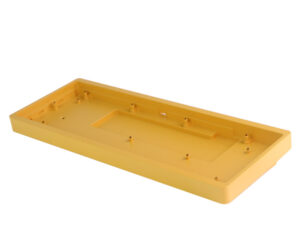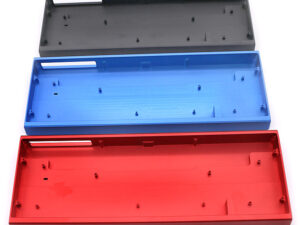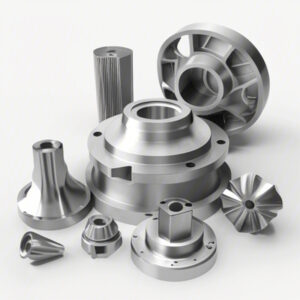As an industry expert with years of experience in CNC machining, I’ve had the opportunity to work with various manufacturers and clients across a wide spectrum of industries. One topic that continually arises in these discussions is cost—specifically, how to manage and reduce CNC machining costs while maintaining high-quality standards.
Whether you’re a business owner, a procurement manager, or a product engineer, understanding the cost structure of CNC machining is essential for making smarter decisions, improving profitability, and ensuring long-term sustainability. In this article, I’ll break down the key components of CNC machining costs, explain the factors that affect pricing, and provide actionable strategies to help you reduce CNC machining costs without compromising on quality or delivery times.
Understanding CNC Machining Cost Structure
Before diving into how to reduce CNC machining costs, let’s first take a closer look at the various factors that contribute to the overall price.
- Material Costs Material selection is one of the most significant contributors to CNC machining costs. Whether you’re machining metals, plastics, or composites, the type of material you choose will directly influence the price. Materials with higher tensile strength or specialized properties, such as titanium or carbon fiber, are often more expensive than more common materials like aluminum or steel.
Actionable Tip: By optimizing material choice to meet only the necessary functional requirements, businesses can avoid overspending on unnecessary material properties.
- Machine Time Machine time is the time spent by a CNC machine to complete a specific task. The faster the machine works, the less the machine time will cost. However, faster machines usually come with a higher initial investment and maintenance cost. The type of CNC machine used (e.g., vertical milling machine vs. horizontal lathe) also plays a significant role in the overall cost.
Actionable Tip: Streamlining machining operations, optimizing tool paths, and reducing setup times can significantly reduce machine time and, in turn, lower costs.
- Labor Costs Labor is another major cost component, and it varies depending on the region, skill level, and complexity of the job. Highly skilled machinists are required for precision jobs, but their labor costs tend to be higher. Similarly, setup time for complex parts can increase labor costs, especially if your shop needs to spend a lot of time programming the CNC machine.
Actionable Tip: Investing in skilled labor and training can improve productivity and reduce error rates, leading to less rework and waste.
- Tooling Costs Tooling refers to the cutting tools and accessories required for CNC machining. These tools, such as drills, mills, and lathes, have varying lifespans depending on their material and the type of machining operation. As tools wear out, they need to be replaced, adding an additional cost to the production process.
Actionable Tip: Regular maintenance and tool optimization can extend the life of tools, reducing frequent replacement and minimizing downtime.
- Overhead Costs Overhead costs cover everything else that contributes to CNC machining, including electricity, shop maintenance, facility costs, and administrative overhead. While these costs may seem small individually, they can accumulate significantly over time, especially in larger facilities.
Actionable Tip: Running energy-efficient machinery, optimizing shop layout, and reducing unnecessary overhead can help lower overall costs.
Key Factors That Affect CNC Machining Costs
Now that we’ve broken down the basic cost components, let’s explore some of the key factors that can influence these costs.
- Part Complexity The more intricate and complex a part is, the more time it will take to machine, which increases the overall cost. Parts with complex geometries or multiple features may require additional tooling, longer machine time, or more skilled labor.
Actionable Tip: If possible, simplifying the design of parts or utilizing standard components can reduce machining time and tooling requirements, thus lowering costs.
- Volume of Production The number of units you need to produce plays a significant role in determining CNC machining costs. Smaller production runs often come with higher per-unit costs due to setup and programming time. On the other hand, larger production runs allow for greater economies of scale, reducing the cost per part.
Actionable Tip: Consider working with your supplier to plan for larger production runs or batch manufacturing, which can help reduce per-unit machining costs.
- Tolerances and Quality Standards Tight tolerances require more precise machining, which can increase costs. If parts need to meet specific quality standards (e.g., aerospace or medical-grade standards), this can further drive up costs due to additional quality control measures, specialized equipment, and skilled labor.
Actionable Tip: Only request tight tolerances when absolutely necessary, and consider compromising on certain dimensions or quality levels if your project permits.
- Lead Time A shorter lead time often results in higher CNC machining costs. Expedited manufacturing requires more labor, faster machine setups, and sometimes, working overtime, all of which add to the cost.
Actionable Tip: Plan ahead to avoid rushing production. If possible, extend lead times to allow for better scheduling and cost efficiency.

Strategies to Effectively Reduce CNC Machining Costs
While the factors influencing CNC machining costs are multifaceted, there are several strategies you can implement to reduce costs effectively without compromising on quality or delivery times.
- Design for Manufacturability (DFM) One of the best ways to reduce CNC machining costs is by designing parts with manufacturability in mind. A well-designed part can make the machining process more efficient, saving time and reducing tooling requirements. For instance, reducing complex features or eliminating unnecessary geometry can reduce machining time and material waste.
- Optimize Tooling and Machine Use Investing in high-quality, durable tooling can reduce the need for frequent replacements, which is a major cost driver. Additionally, optimizing the usage of CNC machines by programming efficient tool paths and reducing idle time can significantly lower production costs.
- Automate the CNC Machining Process Automation is a game-changer when it comes to reducing CNC machining costs. Using automated machines for repetitive tasks can reduce labor costs, improve consistency, and speed up production. Automation can also be applied to material handling, loading/unloading, and quality control, further improving overall efficiency.
- Work with Experienced CNC Manufacturers Partnering with an experienced CNC machining supplier, like YL-Machining, can help you avoid costly mistakes. A good supplier will have the expertise to guide you on material selection, process optimization, and cost-effective manufacturing solutions. They can help you identify areas where costs can be reduced without affecting the final product quality.
- Negotiate Bulk Discounts and Purchase Agreements If you’re working on large-scale production runs, it’s worth negotiating with suppliers to get discounts on materials, tooling, or machine time. Long-term partnerships and bulk purchase agreements can help reduce the overall cost per part.
Real-World Example of Cost Reduction in CNC Machining
Let’s say you have a batch of parts that need to be manufactured, and you’re concerned about cost. By implementing some of the strategies mentioned earlier, you can achieve significant savings. Here’s a real-world example from YL-Machining’s recent project:
| Action | Outcome |
|---|---|
| Simplified part design | Reduced machining time by 15% |
| Optimized tool paths | Reduced tool wear and machine time by 20% |
| Negotiated bulk material purchase | Reduced material costs by 10% |
| Increased automation in handling | Reduced labor costs by 8% |
This project demonstrated how small changes in design and process can lead to significant reductions in CNC machining costs.
Reducing CNC machining costs is a complex but achievable goal. By understanding the underlying cost structure, optimizing your design and manufacturing processes, and working closely with skilled suppliers, you can reduce expenses while still achieving high-quality results. Whether you’re dealing with tight budgets or trying to stay competitive in a rapidly evolving market, these strategies can help you achieve long-term success.
Do you have any questions about how to implement these cost-reducing strategies for your next project? Feel free to reach out to me or comment below, and let’s discuss how we can optimize your CNC machining processes together.




-300x225.jpg)


-300x225.jpg)





